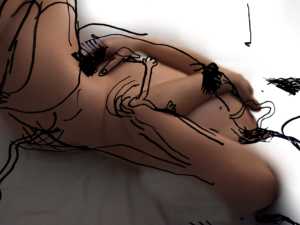Fräulein cover star Kris Lemsalu’s artistic interventions and performances are reminiscent of mythical rituals, offering connection and comfort in times of lockdown.
Art has always docked with myth. Beyond the conscious, under obvious connections and effects, there is something hidden within the depths of culture: images, archetypes, stories, feelings, and memories, which, in their fleetingness, can only be grasped and best shared through allegory, dreams, hallucinations. We need people– artists– who can feel and properly express.
Estonian-born Kris Lemsalu is a catcher of dreams and myths. Her performative and sculptural works stand on the threshold, emerging in a state of which Novalis says: “We are near waking when we dream that we dream.”
When confronted with Lemsalu’s art, it becomes apparent that one is dreaming or wandering through a world that is more confused and complicated, more mystical and older, than what is seen in our everyday life. Her performances resemble shamanistic rituals; her works of art are cultural artifcats made of porcelain, fur, shells, wool, silicone. Apart from their materiality, one never knows whether they come from a distant past or a distant future. there are strange idols with eight arms and bloated bodies, and there is a mixture of shrine and fountain which could also be envisioned as a temple, of which caused quite a sensation at the Venice Biennale.
Often, it is about nothing less than the human being in the cosmos, of eternal life and death, of the transition from matter into the ether. For example, in the work Father is in Town, hybrid beings undergo artistic metamorphoses: two figures are entangled on the floor, their porcelain dog faces licking each other in a typical dog-like greeting, however their hands and feet are human.









